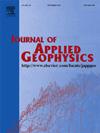An interpretation-based convolution neural network framework for geophysical data fusion and aquifer structure identification
IF 2.2
3区 地球科学
Q2 GEOSCIENCES, MULTIDISCIPLINARY
引用次数: 0
Abstract
Identification of 3D realistic aquifer structures is essential for predicting physicochemical processes in groundwater systems. However, the characterization of highly heterogeneous aquifers remains challenging because it relies on the effective fusion of multiple geophysical data sources having wide areal coverage, as well as downhole geophysical data featuring high resolution. This study establishes a novel 3D convolutional neural network model to generate aquifer structure from 3D seismic data, constrained by sparse downhole sonic and lithology logs. In the model, the data fusion procedure is designed to follow the logics of conventional manual interpretation of multiple geophysical data, and to address the 3D spatial relationships between geophysical data and lithology. The method is implemented in a typical fluvial aquifer featuring coarse paleovalley sediments (sandstone) embedded in the tight surrounding rocks (claystone), in order to identify channelized sandstone from low-permeability claystone. It is confirmed that the proposed model reliably generates 3D aquifer structures based on seismic amplitudes, downhole sonic and lithology logs. The method is compared to traditional machine learning models that focus on 1D conversion from geophysical attributes to lithology. The results show that the newly-developed model performs more robustly and accurately because the use of 3D convolution allows considering the relationships between seismic amplitude, sonic velocity and lithology in both vertical and horizontal directions. Moreover, the inclusion of sonic logs constraint in the model, following the logics of manual seismic data interpretation, significantly improves the model accuracy. The method can find broad applications for the characterization of subsurface heterogeneity even featuring non-gaussian permeability distribution like the demonstrated fluvial aquifer.
基于解释的卷积神经网络框架,用于地球物理数据融合和含水层结构识别
确定三维真实含水层结构对于预测地下水系统的物理化学过程至关重要。然而,由于高度异质含水层的特征描述有赖于多种地球物理数据源的有效融合,而这些数据源的覆盖范围很广,井下地球物理数据的分辨率也很高,因此这种特征描述仍然具有挑战性。本研究建立了一个新颖的三维卷积神经网络模型,以稀疏的井下声波和岩性记录为约束,从三维地震数据生成含水层结构。在该模型中,数据融合程序的设计遵循了传统人工解释多种地球物理数据的逻辑,并解决了地球物理数据与岩性之间的三维空间关系问题。该方法在一个典型的河道含水层中实施,该含水层的特征是粗大的古河谷沉积物(砂岩)嵌入紧密的围岩(粘土岩)中,以便从低渗透性粘土岩中识别出河道砂岩。研究证实,根据地震振幅、井下声波和岩性记录,所提出的模型能可靠地生成三维含水层结构。该方法与侧重于从地球物理属性到岩性的一维转换的传统机器学习模型进行了比较。结果表明,新开发的模型更稳健、更准确,因为使用三维卷积可以考虑地震振幅、声波速度和岩性之间在垂直和水平方向上的关系。此外,按照人工地震数据解释的逻辑,在模型中加入声波记录约束,大大提高了模型的准确性。该方法可广泛应用于地下异质性的表征,即使是具有非高斯渗透率分布特征的地下异质性,如已证明的河流含水层。
本文章由计算机程序翻译,如有差异,请以英文原文为准。
求助全文
约1分钟内获得全文
求助全文
来源期刊

Journal of Applied Geophysics
地学-地球科学综合
CiteScore
3.60
自引率
10.00%
发文量
274
审稿时长
4 months
期刊介绍:
The Journal of Applied Geophysics with its key objective of responding to pertinent and timely needs, places particular emphasis on methodological developments and innovative applications of geophysical techniques for addressing environmental, engineering, and hydrological problems. Related topical research in exploration geophysics and in soil and rock physics is also covered by the Journal of Applied Geophysics.
 求助内容:
求助内容: 应助结果提醒方式:
应助结果提醒方式:


